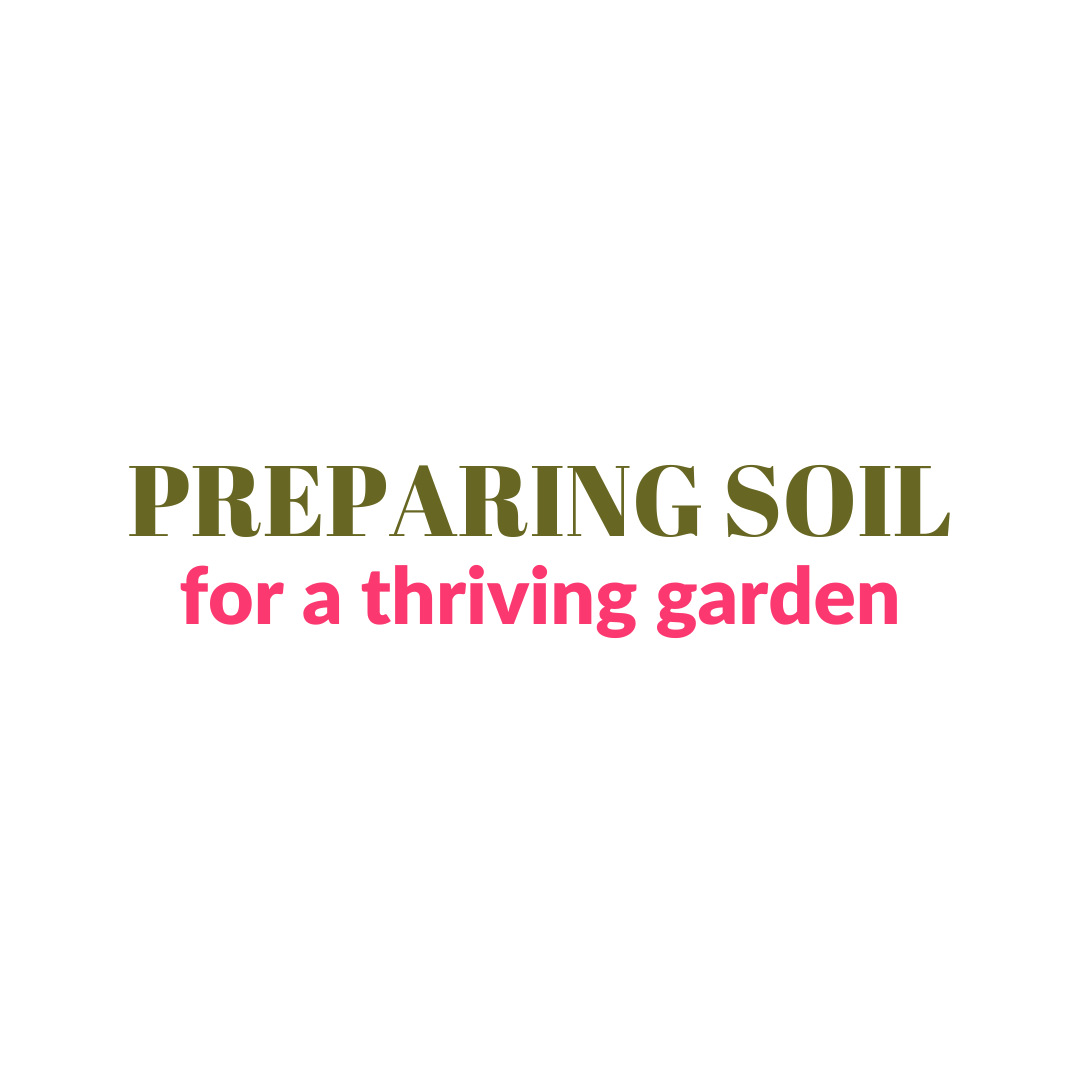

With the new growing season approaching in Hinsdale, now is the perfect time to focus on the foundation of your garden: the soil. Healthy soil is essential for growing flowers, vegetables, trees and shrubs. At Hinsdale Nurseries, we believe that a successful garden starts with healthy, well-prepared soil. In this blog, we’ll guide you through the necessary steps to amend and prepare your soil for the growing season ahead.
In USDA Zone 6a, our cold winters and relatively short, warm summers mean that soil preparation is especially important. Many of the soils in our area tend to be heavy in clay, which can restrict root growth and cause poor drainage. Additionally, as we experience regular temperature fluctuations, proper soil preparation can help retain moisture during dry spells and protect plant roots during colder weather.
To set your garden up for success, it’s crucial to amend your soil to ensure it has the proper texture, pH, and nutrients to support plant growth.
Step 1: Test Your Soil
Before amending your soil, test its pH and nutrient levels. Soil testing is an easy and reliable way to determine whether your soil is acidic, neutral, or alkaline, and what nutrients it may be lacking.
Most plants in Zone 6a thrive in loamy soil or slightly acidic to neutral soil, with a pH between 6.0 and 7.0. You can purchase a soil testing kit from a local garden center or send a sample to a professional lab. Based on the results, you can better understand how to amend your soil for optimal growth.
Step 2: Add Organic Matter
In Zone 6a, many soils are clay-heavy, which can become compacted, making it difficult for plant roots to grow. The best way to improve soil structure is by adding organic matter such as compost, well-rotted manure, or leaf mold. Organic matter improves soil aeration, moisture retention, and nutrient content, helping to create a loose and well-draining soil.
Spread a 2-4 inch layer of compost or organic mulch over your garden beds and work it into the top 6-8 inches of soil. This will help break up the heavy clay and provide essential nutrients that plants need to thrive.
Step 3: Improve Drainage
In Zone 6a, after snow melts in early spring or during heavy rains, many gardens experience drainage issues. To help your soil drain properly, especially if it’s heavy and clay-based, consider adding sand, perlite, or organic matter to improve its texture. However, be cautious when adding sand to clay soil, as too much can create a cement-like mixture.
If your soil tends to stay soggy, raised beds are a great option for improving drainage. These beds allow water to flow through more easily and help prevent root rot.
Step 4: Adjust Soil pH
If your soil test reveals that your soil pH is off, you may need to make adjustments. Most plants in Zone 6a prefer a slightly acidic to neutral pH, but certain plants (like blueberries) may need a more acidic environment.
To raise the pH (make the soil more alkaline), you can add lime. To lower the pH (make the soil more acidic), add sulfur, pine needles, or peat moss. Always follow the recommendations from your soil test to make precise adjustments.
Step 5: Fertilize for Optimal Growth
Fertilizing can improve soil health, boost plant vigor, promote greener leaves, encourage blooming, and increase resistance to pests and diseases. However, too much fertilizer can be harmful, so always follow the product’s directions. Here’s a quick guide to choosing the right fertilizer:
• General Maintenance: For balanced growth, use a 10-10-10 fertilizer for all-purpose plant care.
• Acid-Loving Plants: Use Holly-tone for evergreens like rhododendrons and boxwoods that prefer acidic soil.
• Flowering Annuals: Encourage more blooms with Miracle-Gro Shake ‘n Feed Bloom Booster, a time-release, high-phosphorus fertilizer.
• Spring-Blooming Bulbs: Use Bulb-Tone for tulips, daffodils, and hyacinths to promote lasting blooms.
• Roses: Apply Rose-tone for more abundant and vibrant roses.
Apply fertilizer in the spring when plants are actively growing. Avoid fertilizing in the fall, as it can cause new growth that may be damaged by frost.
Step 6: Mulch for Moisture and Weed Control
Mulching is a simple yet effective way to maintain healthy soil and support your plants throughout the growing season. Mulch helps retain moisture, suppress weeds, and regulate soil temperature—keeping roots cool in summer and insulated in winter.
For the best results, apply a 2-3 inch layer of organic mulch like shredded bark, wood chips, or straw around your plants. As it decomposes, mulch adds valuable organic matter to your soil, further improving its structure.
Mulch also acts as a barrier against extreme temperature fluctuations, which is especially beneficial in Zone 6a. Just be sure to keep the mulch a few inches away from plant stems to prevent rot.
Mulching in spring helps lock in moisture as plants start their growth cycle, and a fresh layer in the fall can protect your garden through the colder months. It’s a simple, natural way to keep your garden thriving year-round.
Step 7: Maintain Healthy Soil Throughout the Season
Soil care doesn’t stop once your plants are in the ground. To maintain healthy soil throughout the growing season, continue adding organic matter or compost each year. This helps replenish nutrients and improve soil structure.
Water your plants deeply, but infrequently, to encourage deep root growth. Avoid shallow watering, which promotes weak roots. You can find our complete watering guide [here].
At Hinsdale Nurseries, we’re here to help you achieve the garden of your dreams. Whether you need advice on soil testing, composting, or selecting the right plants for Zone 6a, our team is ready to assist. Visit us in Willowbrook or check out our website for more tips and expert advice.
Connect with Us!
630-323-1411
7200 S. Madison St.
Willowbrook, IL
Blog: https://hinsdalenurseries.com/blog
Facebook: https://www.facebook.com/HinsdaleNursery
Pinterest: https://www.pinterest.com/hinsdalenursery/
Twitter: www.twitter.com/HinsdaleNursery
Instagram: www.instagram.com/Hinsdale_Nurseries/
YouTube: https://www.youtube.com/channel/UC5GUOu9abCvL9ZDNJBSunrA
Website: https://hinsdalenurseries.com/






